Jill Derryberry

Recent Posts
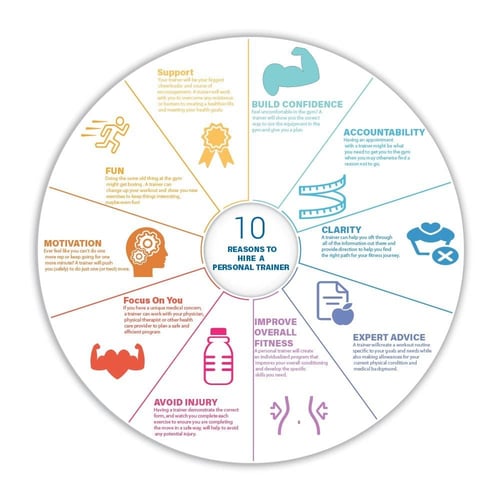
Are you wondering " Should I hire a personal trainer ?" Working with a personal trainer is one of the most successful ways to improve your health and fitness. Personal trainers are used by people of all fitness, age and economic levels to help make lifestyle changes not easily achieved by themselves. A 2014 study in the Journal of Strength and Conditioning Research found those who used a trainer had greater improvements in their lean body mass, and other measures of health related fitness, than those who completed self-directed training.
Consider the following benefits of hiring a personal trainer:
1. Build Confidence- Feel uncomfortable in the gym? Don’t know how to use all the machines? A trainer will show you the correct way to use equipment in the gym and give you a plan.
2. Accountability– Do you find it difficult to keep working out consistently? Having an appointment with a trainer might be what you need to get you to the gym when you may otherwise find a reason not to go.
3. Clarity– Fitness and nutrition can be very confusing. Every day seems to bring a new diet or workout trend. A trainer can help you sift through all of the information out there and provide direction to help you find the right path for your fitness journey.
4. Expert Workout Advice– A personal trainer will help you define achievable goals and plan how to meet them. They will create a workout routine specific to your goals and needs while also making allowances for your current physical condition and medical background.
5. Improve Overall Fitness- A personal trainer will create an individualized program that improves your overall conditioning and develop the specific skills you need. They will monitor your progress and fine-tune your program as you go, ensuring your progress and helping you work your way off plateaus.
6. Avoid Injury– Having a trainer demonstrate the correct form, and watch you complete each exercise to ensure you are completing the move in a safe way, will help to avoid any potential injury. Also, your trainer will plan your workouts to maximize the benefits and reduce the possibility of injury or overtraining.
7. Focus On You- If you have a unique medical concern, a trainer can work with your physician, physical therapist or other health care provider to plan a safe and efficient program that will speed your recovery or enable you to reach your health goals.
8. Motivation– Ever feel like you can’t do one more rep or keep going for one more minute? A trainer will push you (safely) to do just one (or two!) more.
9. Fun – Doing the same old thing at the gym might get boring (and may prevent you from reaching your goals). A trainer can change up your workout and show you new exercises to keep things interesting, maybe even fun!
10. Support– Your trainer will be your biggest cheerleader and source of encouragement. I know most trainers became certified for the same reason I did, because we want you to succeed in meeting your goals and live a happy and healthy life. A trainer will work with you to overcome any resistance or barriers to creating a healthier life and meeting your health goals.
Thinking about working with a personal trainer? Have questions? Sign up for your free fitness assessment today!
Topics: LivRite News
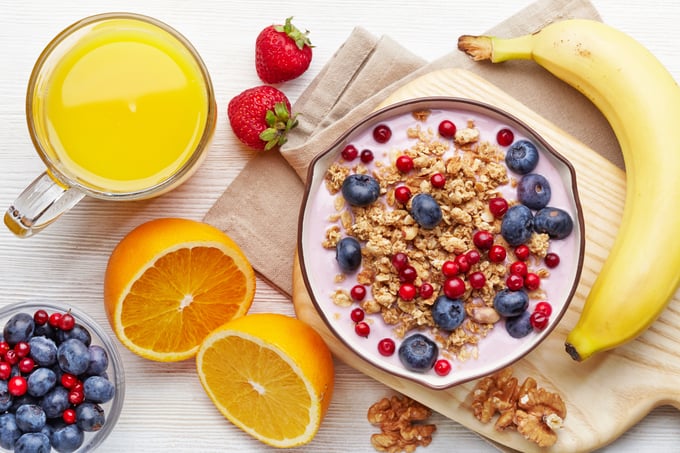
Food is fuel for your body so you want to be sure you are giving it what it needs to optimize your workout and your overall health. Without enough quality fuel, your metabolism gets the message it needs to slow down to preserve what calories you do have left in your body (storing all and any fat), or if all of your glycogen stores (your body breaks down carbohydrates into glycogen to use for energy) are depleted, your body will try slow you down, possibly making you feel nauseous or faint, or in more extreme cases may eat away at your muscles when it runs on empty. Not fueling properly for your workout can be bad for your blood sugar, your muscles and ruin your performance.
Fueling for (and recovering from) exercise matters most when you are performing a longer and more intense workout. No matter what you are doing, though, you want to make sure to eat any small snacks at least 20 - 30 minutes pre-workout, which leaves time for digestion. Keep any bigger meals to at least two hours before your workout.
Before Your Workout: If you are eating an hour or two before a workout, make sure to eat a small amount of something easily digestible. Try to stay away from anything with too much fiber as it takes a long time to digest and may cause an upset stomach. Carbs are important and depending on your workout you may want to add in some protein to stave off hunger as well. Some examples; half a banana, some greek yogurt, half of a fruit and nut bar like a Larabar, or almond butter on a piece of whole grain toast.
After Your Workout: Again, it depends on how long you exercised and the intensity of your exercise when considering what to eat when you are done. If your workout is under an hour and not especially intense, no post workout snack or meal is necessary. I know when I plan to run for 30 or 40 minutes, I love to run mid morning right in between breakfast and lunch, no special snacking required. If you had a more lengthy workout and/or did strength training, be sure to eat a little something with healthy carbs and protein after. Some examples, cottage cheese and peaches, Triscuits and cheese, almond or natural peanut butter on whole grain bread, or a handful of almonds and fruit. Just don't overdo it!
Experiment with your pre and post workout meals and snacks. Make sure you drink plenty of water and find what works best for you! If you need ideas for healthy snacks, check out some of our favorite healthy recipes.
Topics: LivRite News
Stretching vs. Foam Rolling: What is The Difference?
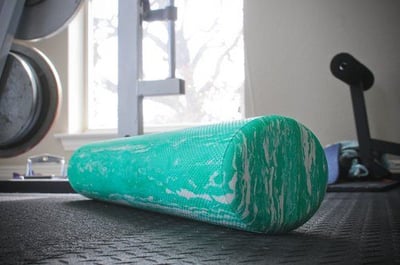
I know it is tough to find time to exercise, let alone another 10 minutes to stretch or foam roll before or after you work out. But you can reap real benefits from any type of dynamic warm up before, and muscle lengthening after exercise. Foam rollers can be used at home or at the gym.
Stretching vs. Foam Rolling
Before your workout, it is important to warm up your muscles. Research now shows that static stretches (where you extend a muscle to the end of its range of motion and hold) should only be done after you complete your activity. To warm up, you should do dynamic stretches (continuous movement where the muscle goes through the full range of motion). After a workout, static stretches help to lengthen muscle and improve flexibility.
Foam rolling is a self-myofascial release (SMR) technique that focuses on loosening and breaking up tension in the fascia as well as releasing muscle tightness. It is similar to getting a massage, just in this case you are your own massage therapist. The foam roller will never completely replace a therapist’s hands, but it serves as a great alternative and can be done anytime.
Three Benefits to Stretching and Foam Rolling
1.Increased Blood Flow
As part of a warm up, foam rollers should be used first thing to get the blood flowing to your muscles (which helps reduce the possibility of injury). This can also be done with dynamic stretching. After your workout, foam rollers help flush out the blood that has pooled in the working muscles and allows fresh nutrients and oxygen to come in and begin the healing process (which helps to reduce soreness).
2. Increased Flexibility and Range of Motion
A study published in the Journal of Sports Rehabilitation found that when combined with static stretching, foam rolling can lead to impressive flexibility improvements. Increased flexibility helps to limit soreness and prevent injuries.
3. Relieve Pain
Foam rollers can work out muscle tightness, soreness or any knots you may feel in your muscles. While rolling these spots you may experience some discomfort. It should not be unbearable though, and when you are done it should feel better. Releasing these muscle knots and tightness helps to return your muscles elasticity and reestablish proper movement patterns along with making movement pain free.
All three of these benefits help prevent injury and decrease recovery time after a workout. Which means you can keep up with your workouts so you will see results faster! Pair foam rolling with static stretching (in that order) after your activity for best results.
Are you ready to roll? Here are four moves to get you started:
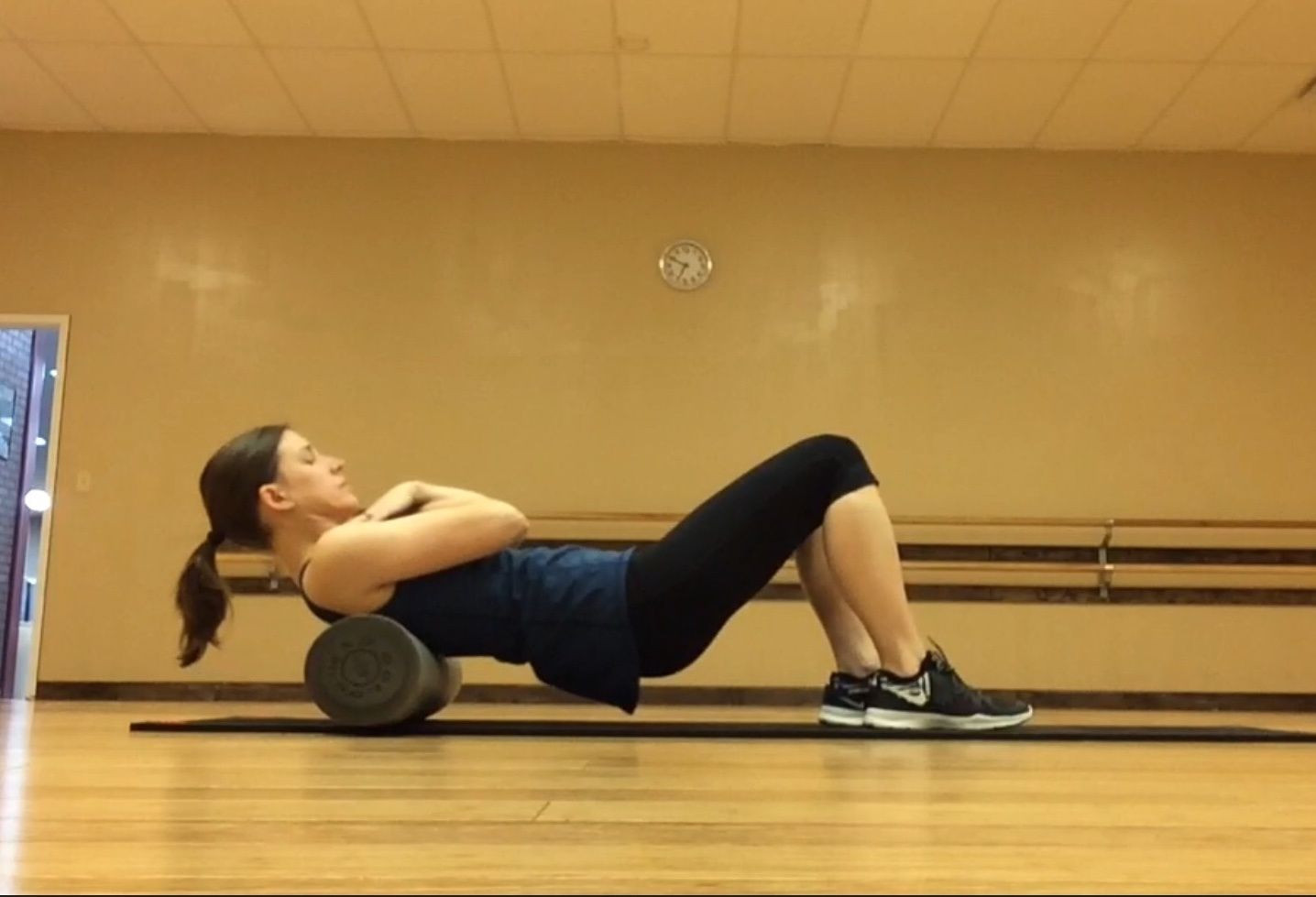
Upper Back Roll
Lie down with your back on the floor. Place a foam roller underneath your upper back and cross your arms in front of you or behind your head, protracting your shoulder blades. Raise your hips off of the ground, placing your weight onto the roller. Shift your weight to one side, rolling the upper to mid back. Alternate sides.
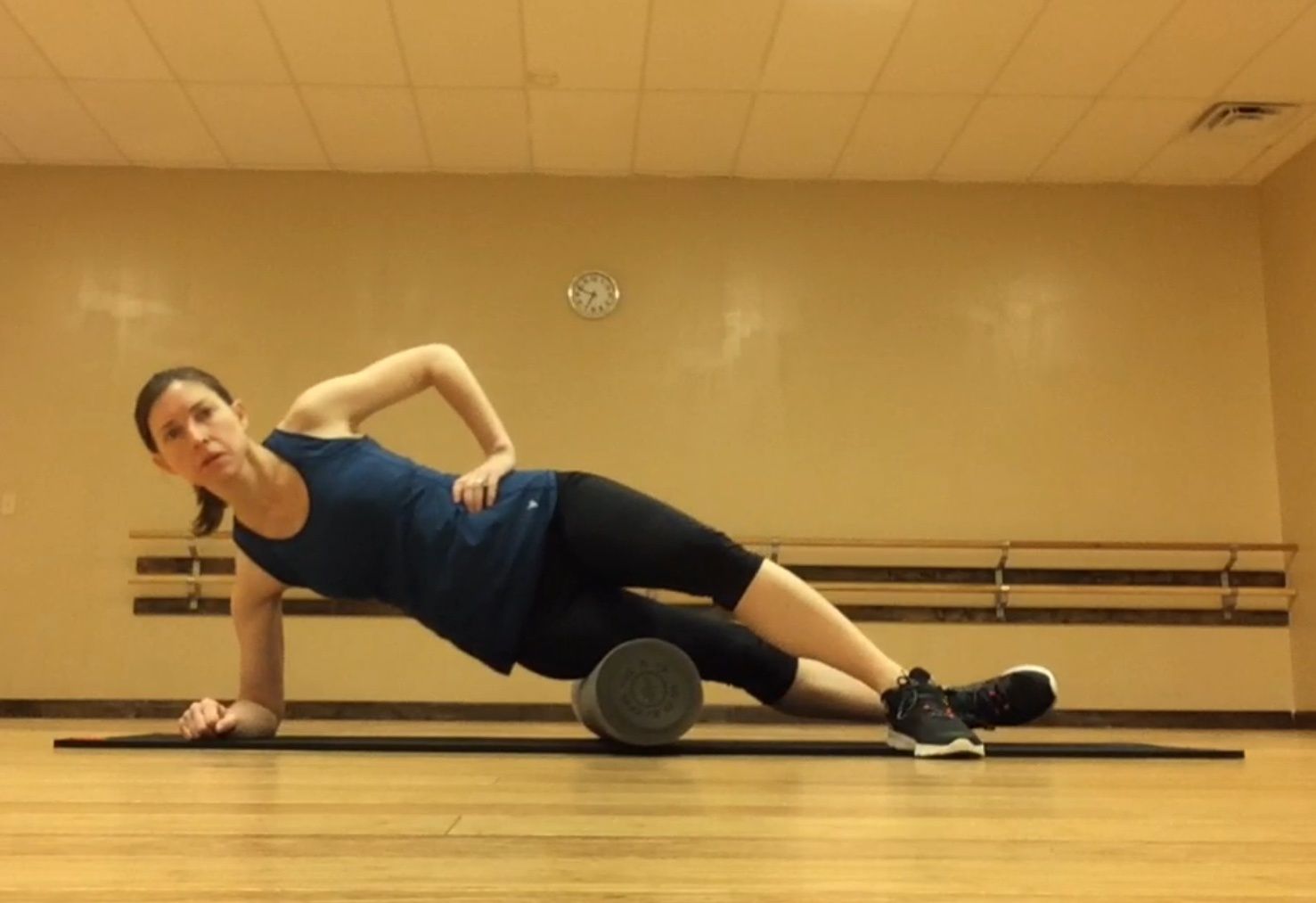
IT Band Roll
Lie on your side with bottom leg placed onto a foam roller between the hip and the knee and top leg crossed in front of you. Place as much of your weight as is tolerable onto your bottom leg. Roll your leg over the foam from your hip to your knee. Repeat on opposite leg.
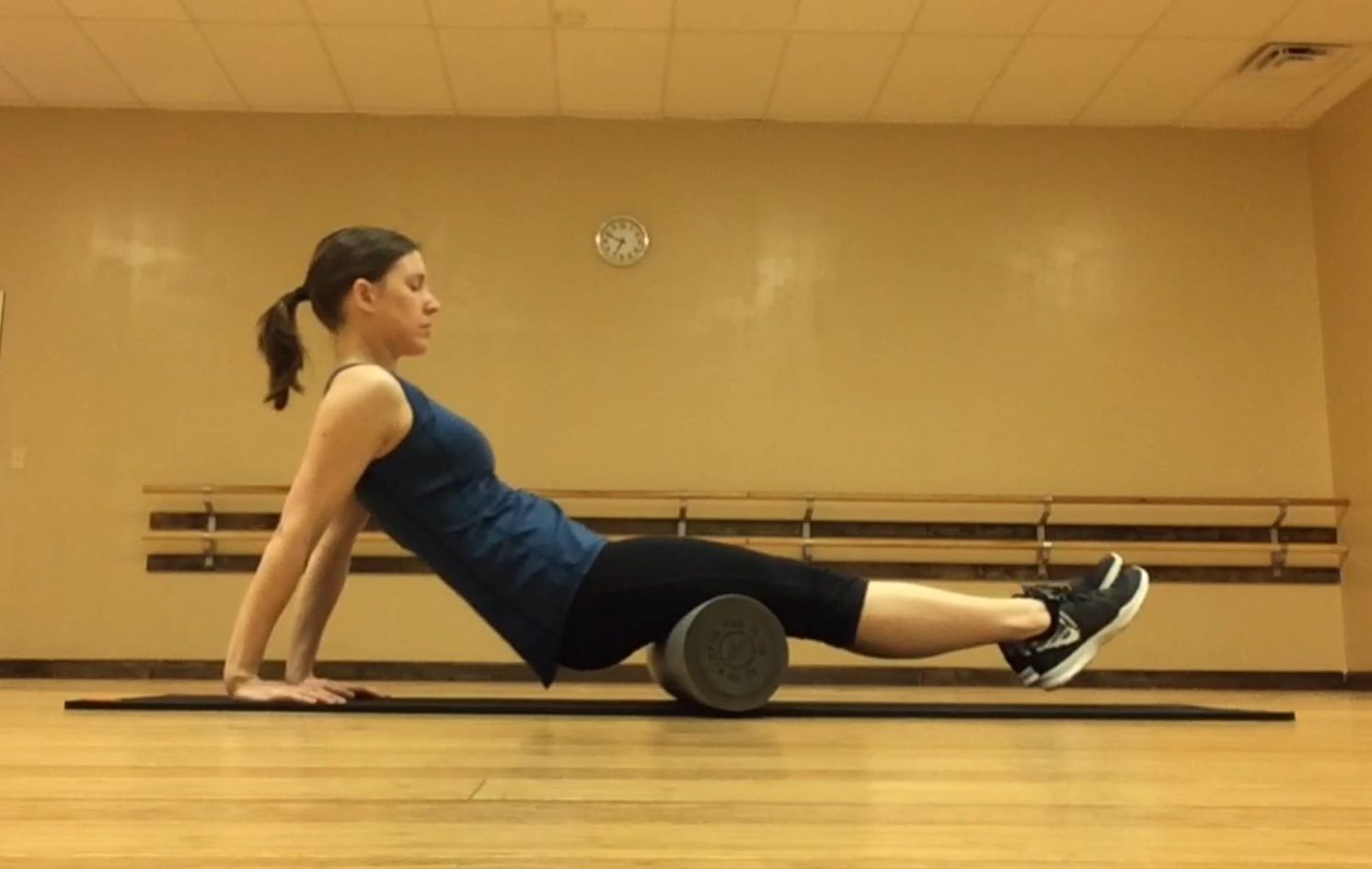
Hamstrings Roll
Sit and extend your legs over a foam roller so that it is on the back of your upper legs. Place your hands behind you and lift your hips off of the floor. Roll from below the hip to above the back of the knee.
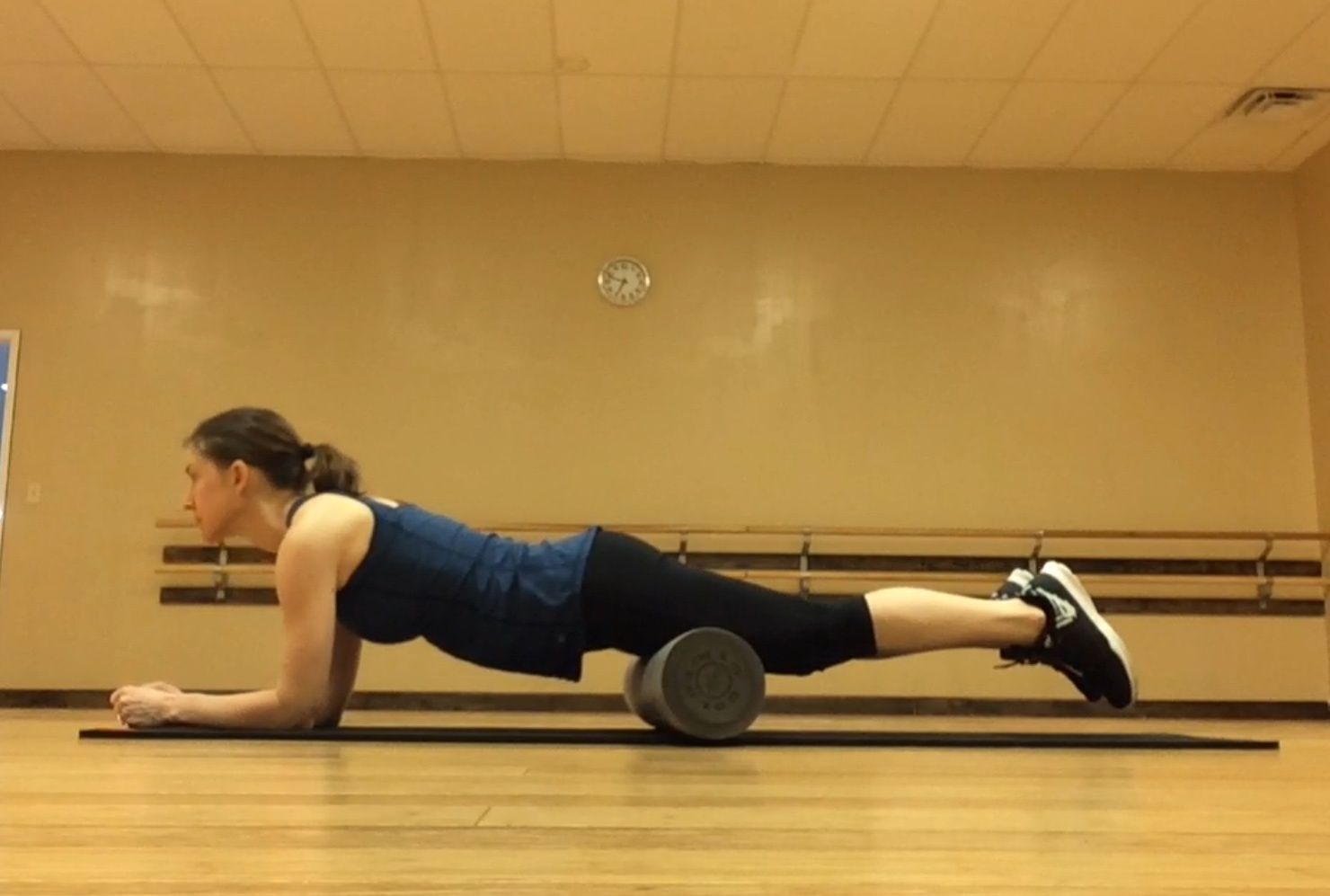
Quadriceps Roll
Lie face-down on the floor with your weight supported by your hands or forearms. Place a foam roller underneath your thighs. Roll from above the knee to below the hip.
Note: When dealing with injuries or joints and muscles that are particularly painful, consult your physician prior to implementing a new workout, stretch or foam roll.
Find great stretching classes that LivRite offers.
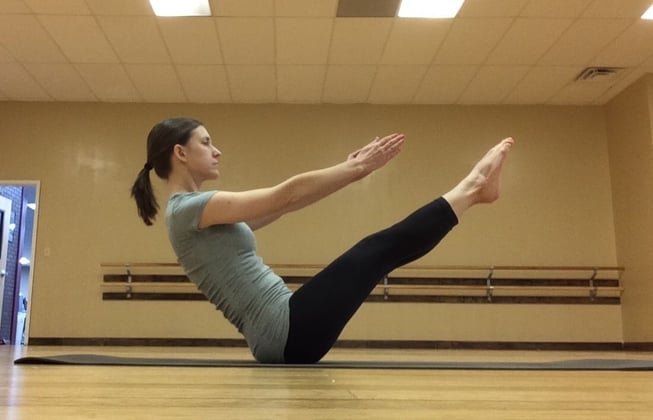
Pilates is a low impact form of exercise that strengthens muscles, improves flexibility and balance. It isn’t a cardio workout that gets your heart rate up, rather it is a series of movements done with concentration, control and flow with focus on your breath. Pilates elongates and strengthens, improving muscle elasticity and joint mobility. Here are three basic things to know about Pilates.
1. Pilates Develops Core Strength
Developed by Joseph Pilates in World War I, Pilates focuses on the muscles that Pilates refers to as your powerhouse. These are the muscles that circle the body just below the navel (including abdominals, oblique, lower back and glutes) and that we rely on to support a strong back, good posture and efficient movement patterns. Your core muscles are the focus but are not the only ones that get a workout. You will also feel your arms and legs working when they are controlling and/or applying loads to your powerhouse during movements.
2. Many Types of Pilates Classes
There are many different types of Pilates classes. Some classes incorporate other types of exercises along with classic Pilates or Pilates inspired moves. Other classes may only do Pilates exercises on a mat, some use an apparatus like a Reformer or a Cadillac, and others may use props such as weights, balls, magic circles or resistance bands.
3. Pilates Benefits All Fitness Levels
With thousands of possible exercises and modifications, plus being a low impact exercise, Pilates workouts can be tailored to pretty much everyone. Building from core strength, focusing on proper alignment, and a body/mind integrative approach make Pilates beneficial to all. Research has found that Pilates can be an effective treatment for injuries and illnesses such as: chronic neck and back pain, hip or knee replacement, fibromyalgia, and arthritis.
Joseph Pilates once said, “Physical fitness is the first requisite of happiness.” Pilates is a great addition to your workouts, give it a try!
Ready to try Mat Pilates? Try my class at the LivRite Fitness Noblesville location on Mondays at 9:00 am. Or click on the link below to schedule a visit to the LivRite Fitness near you!
Topics: LivRite News
Everything You Need To Know About HIIT Workouts
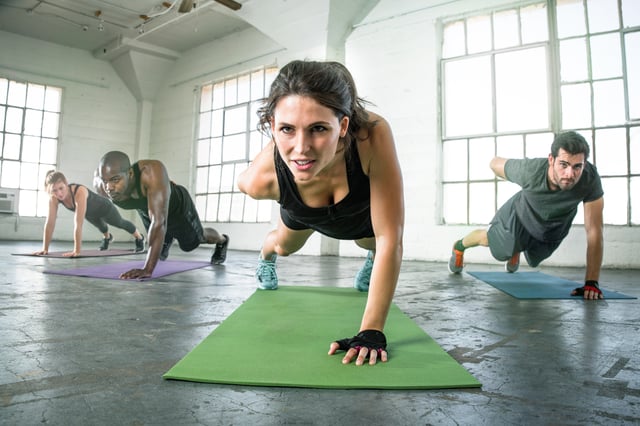
What is HIIT?
You may have heard of HIIT, High Intensity Interval Training. It’s a popular workout right now and for good reason. When you do a HIIT workout, you can burn more calories in a shorter period of time. Who doesn’t want to work out less and burn more calories? So, what is HIIT?
HIIT is a training technique that alternates periods of high intensity with periods of rest or active recovery. HIIT brings your heart rate up to 80%-95% of your maximum heart rate for a work period (interval) ranging from 5 seconds to 8 minutes long (depending on the workout) and then back down for a recovery interval that may last equally as long as the work period and performed at 40%-50% of your maximum heart rate. By varying the intensity of these intervals, your body is working harder than it would if it was maintaining your heart rate at a steady level. This is similar to your car’s gas mileage. If you are traveling at a steady speed, you have better gas mileage. However, driving in an area where you are starting and stopping a lot will use more gas. Just like city driving burns more gas than highway miles, a HIIT workout can burn more calories in a shorter amount of time than a steady state cardio workout.
Benefits of hiit workouts
There are more benefits to HIIT than burning more calories during the workout. You will also burn more calories after you exercise than you would after a regular workout. The post exercise period is called EPOC, excess post-exercise consumption. This is generally a 2-hour period after you exercise where the body is restoring itself to pre-workout levels. This takes energy so you are still burning more calories during this period than you normally would when you are at rest. Since HIIT workouts are so much tougher on your body, the EPOC generally tends to be higher, adding about 6% to 15% more calories to the overall workout energy expenditure. Another bonus, HIIT pushes you to use both your aerobic and anaerobic systems which is great for your heart.
Is it for all fitness levels?
HIIT can be done with any type of exercise and different intervals of intensity so it can be suitable for all fitness levels and people with special conditions. However, it isn’t a great place to start an exercise routine. Prior to beginning HIIT training it is best to have a base level of fitness. A base level of fitness is defined as having completed consistent training 3 to 5 times a week for 20 - 30 minutes per session for several weeks. Most importantly when you do HIIT workouts, make the intensity of the work interval so that you get your heart rate up to 80% - 95% of your maximum heart rate. Don’t feel you have to keep up with the person next to you at the gym. Everyone’s body is different and at varying fitness levels. Safety is always first and your focus should be on you and your optimal training, not on keeping up with anyone else.
How often to do HIIT Workouts
Since it is intense, and therefore hard on your body, HIIT should not be done more than two times a week. Plus, those sessions should be spread out throughout the week so your body has adequate time to recover. Your lower intensity workouts, steady state cardio or strength training can be done in between.
Ready to do some HIIT? Try my Bootcamp HIIT class at the LivRite Fitness Noblesville location on Tuesdays and Thursdays at 6:30 pm. Or click on the link below to schedule a visit to the LivRite Fitness near you!
Topics: LivRite News


